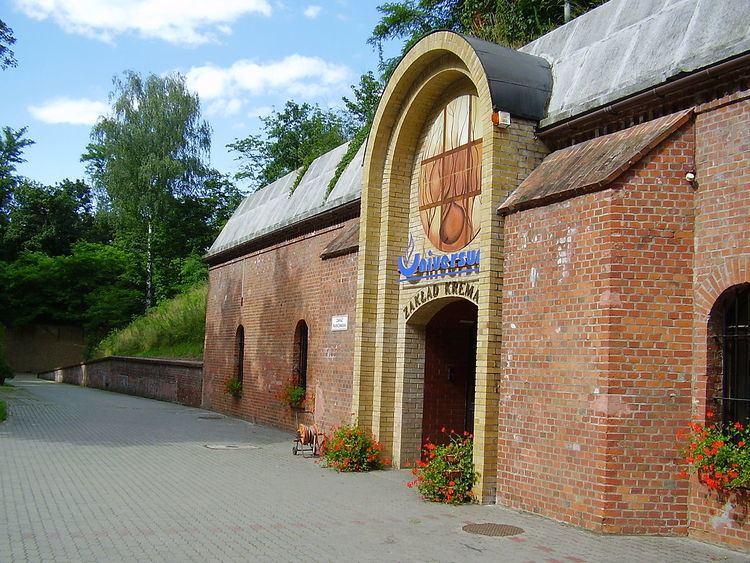 | ||
Stalag XXI-D was a German World War II PoW Camp based in Poznań (Posnan), Poland.
Contents
Description
Following the invasion of Poland in 1939 and the establishment of the Reichsgau Wartheland, Poznań became the administrative centre of 'Wehrkreis XXI' (Military District XXI). Some of Poznań's eighteenth century forts were used as prison camps. Most notorious of these was the concentration camp, Fort VII, which was predominately used to house Polish prisoners.
Some other forts, along with labour camp locations in the surrounding countryside, were used to hold PoWs. These collectively formed Stalag XXI-D and accommodated just over 3000 prisoners in total.
Camps
In Poznań itself, three forts were used to house PoWs; Rauch, IIIA and VIII.
On the eastern, right, bank of the River Warta, near to the present day St. Roch bridge, stood Fort Rauch, the most southern of the right bank fortifications. Although partially demolished during the 1920s, it was used to accommodate about 750 men. An ICRC report of August 1941 described the fort as being "a circular building, made of red brick with three floors each with its windows facing an interior court which acts as the hub of the fort. There is no overcrowding and the rooms are not so large that they become noisy when filled with prisoners." Prisoners lived in many of the 50 basement rooms of the brick built redoubt, with 30-46 beds per room. Other rooms were used as a common room and theatre. After the war Fort Rauch was completely demolished and a college now stands on the site.
52°24′7.20″N 16°57′3.60″E
Further to the north-east, Fort IIIA (Fort Prittwitz) was used to hold Gaulist French soldiers. In 1993 Fort IIIA was converted for use as a crematorium. It is set in what are now grounds of the Milostow cemetery, which contains graves and memorials to Poznań's many war dead. 52°25′0.62″N 17°0′5.69″E
Of the west, left bank forts, Fort VIII (Fort Grolman) was also used to house British and French prisoners.; The fort still stands, located to the south of Stadion Miejski, home to Lech Poznań football club. 52°23′42″N 16°51′25.2″E
Work camps were established in a wide area in and around Poznań. These included; Working Camp 4, Ostrowo Krotoszyn d14; Kuhndorf(possibly located at or near Sołacki Park renamed 'Kuhndorfpark' during the occupation in the Niestachów, Jeżyce area of north west Poznań.); XXI-D/Z Schildberg June–December 1943 (about 130 km south-west of Poznań), XXI-D/Z Montwy September–December 1943 (near Hohensalza about 107 km north-east of Poznań), and even as far away as Litzmannstadt/Łódź (Lodz) about 200 km to the east and closer to Warsaw than Poznań. Despite the distance, administration of the work camp at Łódź fell under Stalag XXI-D for part of the war. One group of PoWs were billeted in a disused textile dye works and worked in engineering workshops under the control of the German Ordnance Corps, supplying repair services for the Russian Front. This Ordnance Corps was known as H.K.P 20 (translated as Rearguard Vehicle Repair Park). The German Army training area at Warthelager a few miles north of Poznan, was the location of a PoW working camp between July 1940 and June 1942. Initially a sub-camp of Stalag XXI-B, by September 1941 became camp 11 of Stalag XXI-D. Prisoners moved between three locations within a few kilometres during that period, including a disused Polish Cavalry stables. Prisoners worked, for example, filling bomb craters.
